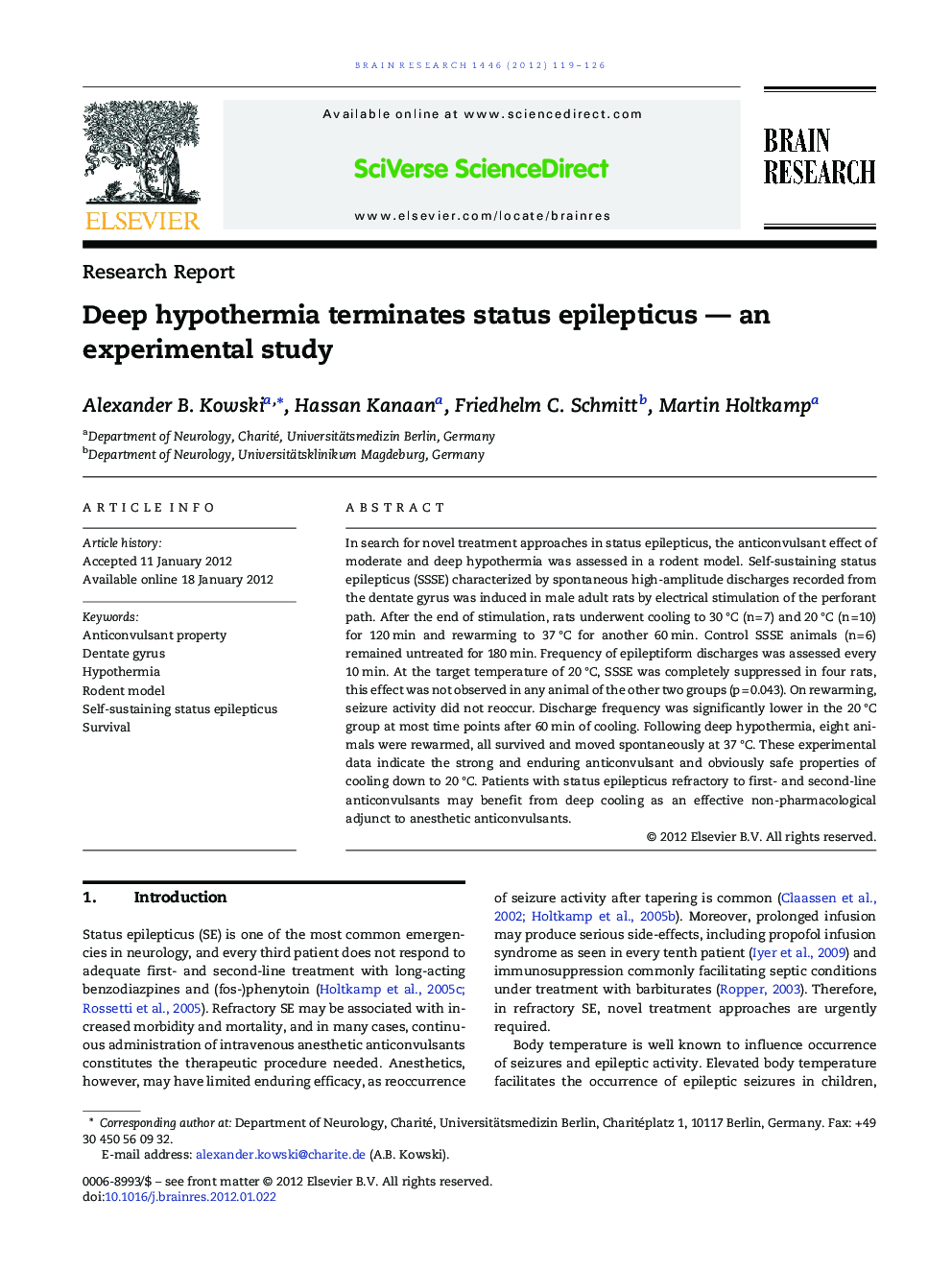| Article ID | Journal | Published Year | Pages | File Type |
|---|---|---|---|---|
| 4325336 | Brain Research | 2012 | 8 Pages |
In search for novel treatment approaches in status epilepticus, the anticonvulsant effect of moderate and deep hypothermia was assessed in a rodent model. Self-sustaining status epilepticus (SSSE) characterized by spontaneous high-amplitude discharges recorded from the dentate gyrus was induced in male adult rats by electrical stimulation of the perforant path. After the end of stimulation, rats underwent cooling to 30 °C (n = 7) and 20 °C (n = 10) for 120 min and rewarming to 37 °C for another 60 min. Control SSSE animals (n = 6) remained untreated for 180 min. Frequency of epileptiform discharges was assessed every 10 min. At the target temperature of 20 °C, SSSE was completely suppressed in four rats, this effect was not observed in any animal of the other two groups (p = 0.043). On rewarming, seizure activity did not reoccur. Discharge frequency was significantly lower in the 20 °C group at most time points after 60 min of cooling. Following deep hypothermia, eight animals were rewarmed, all survived and moved spontaneously at 37 °C. These experimental data indicate the strong and enduring anticonvulsant and obviously safe properties of cooling down to 20 °C. Patients with status epilepticus refractory to first- and second-line anticonvulsants may benefit from deep cooling as an effective non-pharmacological adjunct to anesthetic anticonvulsants.
► Anticonvulsant effect of hypothermia assessed in a rat model of status epilepticus. ► Cooling exhibits strong anticonvulsant effect at 20 °C compared to 30 °C and controls. ► All animals survived deep hypothermia without relevant neurological sequelae. ► The current experimental findings may be incorporated in clinical treatment regimen.
